Everest Base Camp Trek 2024 | Cost, Itinerary, Full details
Region: Nepal
Base Camp: Kathmandu
Days: 14
Altitude: 5,364 m
Grade: Difficult
Distance: 130 km
Min Age: 8 Years+
Best Season: Summer and Autumn
Trek Description
Have you ever wondered about being in the lap of the world’s tallest peak, Mt. Everest? If yes, then your dreams are coming to reality as we bring up the Everest Base Camp Trek just tailored for you.
Everest Base Camp is one of the greatest adventures in the world having Mt. Everest as the major attraction. This trek takes you through the traditional Sherpa villages, deep green forests, and to the lap of the snow covered Himalayas. Not only that, the cultural learnings and the encounter with wildlife and biodiversity are what bring your journey to life. Located in Solukhumbu region in Sagarmatha National Park, EBC is done in 14 days and it takes you to an altitude of 5,645 meters.
Being surrounded by iconic peaks like Everest, Lhotse, and Nuptse, there’s no question in quenching your thirst of experiencing the cinematic views. Everest also known as Sagarmatha in Nepali and Chomolungma in Tibetan language serves as your best man in the adventurous journey.
The terraced fields and the ever flowing rivers like Dudh Koshi and Bhote Koshi will bring back your soul to life. Not only that, the high suspension bridges, deep gorges and valleys, and also the great Khumbu Glacier are the pinnacle of this journey.
So whether you are an adventure seeker or a nature lover, Everest Base Camp is the ideal choice for trekking.
Your journey towards your EBC starts with a flight from Tribhuvan International Airport to Lukla Airport. Starting from the Sherpa villages and dense forests, you will be welcomed at several stops such as Phakding, Namche, Dingboche, and Gorak Shep. The best part is that you will get to share the culture, language, tradition, and lifestyle of the remote settlers, which will surely bring a smile to your face.
Apart from that, you will also visit Kala Patthar at 5550 meters above sea level, which offers you the panoramic views of Mahalangur Mountain Subrange from the Himalayas. It takes around 12 to 14 days to complete this trek, but though it is a long time, you can be assured that your journey remains very fruitful and enjoyable.
So, lace up your boots, pack your bags, and get ready to experience the Everest Base Camp!
Itinerary
Average Elevation: 1,400 m
Day 1 marks your arrival in Kathmandu via Tribhuvan International Airport. Our team members will be there to pick you up and escort you to your respective hotels for overnight stay.
Later, there will be a briefing session in the evening regarding your Everest Base Camp Trek. Our experienced guides will provide you with the insightful knowledge about the base camp and other details like preparation and logistics. Also, the message regarding the day to day itinerary for the trek will be relayed.
Feel free to address any queries you may have during the session.
Note: Try to reach Kathmandu a day earlier so that you have ample time to rent out Trek gear and exchange currency.
Flight Time: 30-40 minutes
Trek Distance: 8 km
Trek Time: 3-4 hours
Phakding Altitude: 2650 m
Lulka Altitude: 2858 m
Day 2 starts with a short briefing before heading towards Tribhuvan International Airport in Kathmandu. From there, we will onboard a flight towards Lukla, which should take anywhere from 30 to 40 minutes. Upon reaching Lukla, you will be led by our guides and then prepare for the short trek to Phakding.
A short time of break and then we will begin our journey towards Phakding at 2650 meters above sea level. It takes around 3-4 hours to reach Phakding from Lukla and throughout the hike, you will be welcomed with the beautiful Himalayas, including peaks like Ama Dablam and Kusum Kanguru.
In between, we cross Chheplung, Ghat, and Nurning villages before stepping on Phakding, which offers insights to Buddhism and Sherpa culture. We will stay at a tea house overnight.
Note: Kathmandu to Lukla flight weight limit is 15 kg per trekker (10 kg Checking bag and 5 kg carry bag). Make sure to pack your bags carefully to avoid any hassle and extra charges.
Lukla Flight: Due to air traffic in peak seasons, Lukla flights may operate from Ramechhap Airport (Manthalli) rather than Kathmandu.
Trek Distance: 10 km
Trek Time: 6-7 hours
Namche Bazaar Altitude: 3475 m
Today, we will start our hike early in the morning through the Himalayan meadows. Following the trails alongside Bhote Koshi River, we will cross the suspension bridges and walk through the rocky uphill trails. After around a couple of hours of trek, we will reach Monjo, where you can purchase the Everest Base Camp Trek permits if you haven’t obtained it yet.
We will push our final hike for today from Monjo, crossing Larja Doban and Jorsalle village. And after around 6 to 7 hours of total hike, we will finally reach Namche Bazaar.
Namche, also known as the ‘Gate to Everest’ is a bustling town of Sherpa featuring cross culture, both from Nepal and western world. We will be staying at a hotel in Namche where we can experience traditional Nepali dishes, such as Dal, Bhaat, and Tarkari.
And needless to say, Namche is a perfect place to have the magnificent views of Mount Khumbu Yül-Lha (Khumbila), Everest, Ama Dablam, and Cho Oyu.
We have already been over 3000 meters above sea level and our body will already be exhausted due to long walks. So it is time to take a rest and acclimatize at Namche on the fourth day.
Usually, acclimatization is done to adapt yourself into the rising altitudes to avoid any risks of altitude sickness. Since Namche lies at high altitude, trekkers must acclimatize before pushing themselves to higher altitudes.
You can go on acclimatisation hike to Syangboche Hill (12,795 ft) from here you can have a view of Lhotse, Mount Everest, Ama Dablam, Thamsurku, Konde Ri, and Khumbila.
We recommend you to trek gradually, eat healthy, stay hydrated and take enough rest.
Trek Distance: 11 km
Trek Time: 5-6 hours
Deboche Altitude: 3,740 m
Trek from Namche to Deboche takes around 6 to 7 hours, so we will be starting our hike early in the morning after a warm breakfast. But before reaching Deboche, we cross Tengboche Village, where the ancient Buddhist Monastery, Tengboche Gompa lies.
Reaching Tengboche requires around 5 hours of walking through the green forests of rhododendron and trail alongside the Bhote Koshi River. Upon reaching the village, we will visit the monastery built in 1916 by Lama Gulu.
After that, we will engage in a couple of hours of trekking to reach Deboche, where we will stay at a tea house overnight.
Trek Distance: 11 km
Trek Time: 5-6 hours
Dingboche Altitude: 4,340 m
Day 6 brings you one of the most exciting hikes in the Everest Base Camp Trek. As we hike up, we will experience the barren and rocky landscapes due to sparse vegetation. We must follow the uphill trail that stretches up to Pangboche, where Pangboche Monastery lies.
While we are on a hike, we will also be enjoying the views of Bhote Koshi river deep down along with Ama Dablam Peaks ahead of us. Leaving Pangboche behind, we will push our final limits towards Somare and then to Dingboche. Overnight stay at a tea house.
This is the second acclimatization day at Dingboche after Namche Bazaar. Located at 4410 meters above sea level, Dingboche is one of the most beautiful places in Khumbu region. However, situated over 4000 meters, it also poses significant risks to altitude sickness. That’s the main reason why we acclimatize at Dingboche.
Acclimatization day does not mean only resting and taking precautionary measures but it comes with opportunities to explore nearby places like Nangkartshang peak and Chhukung. Enjoy the day with cinematic views of Ama Dablam, Makalu, and Cho Oyu during your stay at Dingboche.
Trek Distance: 11 km
Trek Time: 6-7 hours
Lobuche Altitude: 4930 m
Our next destination for today is Lobuche, which sits at 4940 meters above sea level. To reach there, we cross Dughla, which takes around 6 to 7 hours. Following the rocky uphill trail, we will pass Dusa Village before reaching Dughla at 4620 meters.
From Dughla, we will hike north and reach Thokla Pass at 4830 meters above sea level, from where we can get the widespread views of Mt Everest, Cho Oyu, and Ama Dablam. It takes around an hour from the pass to reach Lobuche.
Lobuche is at the base of Khumbu glacier and this small village serves as a stopover before Gorak Shep.
Trek Distance: 10 km
Trek Time: 7-8 hours
EBC Altitude: 5,364 m
Gorak Shep Altitude: 5,164 m
Today, we will be at the last Sherpa settlement in the Khumbu Region, Gorak Shep. Reaching Gorak Shep from Lobuche takes only around 1.5 to 2 hours but remember as this location lies in high altitude, you must be properly prepared with gears and clothes.
Hiking along the Khumbu Glacier will be adventurous as you leave Lobuche and starts on today’s hike. And again, leaving Gorak Shep behind, we will climb uphill towards Everest Base Camp, which is home to fluffy snows and beautiful scenery.
Everest Base Camp is the lap of mighty Everest itself and it serves as the camping location for the expeditioners. We will have a detailed time to explore the base camp and enjoy its beauty.
Later, we will return to Gorak Shep for an overnight stay, following the same standard trail.
Trek Distance: 20 km
Trek Time: 7-8 hours
Today, we will be at the world’s highest webcam, Kala Patthar, located at 5550 meters above sea level. It is a perfect place to have a 360 degree view of Mt. Everest, Cho Oyu, Nuptse, Lhotse, Makalu, and Ama Dablam.
Starting our hike after a warm breakfast in Gorak Shep, we will start on a challenging trek through the rocky and snowy terrains. It should take around 2 to 3 hours to reach Kala Patthar. So an early start will help us catch the views of sunrise from this place. The trail may sometimes be steep, demanding physical and mental endurance, so you know what aspects you must be prepared for.
After enjoying our time we will descend towards Pheriche at 4371 meters (14,341 feet). You will follow the same trail until you reach Dughla. From there, you will catch a path from the right side and head towards Pheriche. Once you reach Pheriche, you can rest for the rest of the day and also visit nearby locations for understanding Sherpa lifestyle, culture, and people.
Trek Distance: 19 km
Trek Time: 6-7 hours
To reach Namche Bazaar from Pheriche, we cross one of the high altitude passes of Nepal, Pheriche Pass (4270 meters). Today, we will walk for around 7 hours and will be covering 14 kilometers of distance.
The hike will take us through Somare, Pangboche, and Tengboche before leading us to Namche. While the descent might be physically demanding, the scenery of the Himalayas and Bhote Koshi river will always be there to soothe us.
Following the trail, we will cross a suspension bridge above Bhote Koshi River and then continue our trek for another few hours. Upon reaching Namche Bazaar, we will stay at a hotel enjoying the vibes of bars and lounges around the area.
Trek Distance: 18 km
Trek Time: 3-4 hours
It is another long day of walking, so be prepared with your endurance and physical strength. It takes around 7 hours to cover 17.7 kilometers of distance from Namche to Lukla. We will be walking through the mixed terrains of rocky and paths. It is the same familiar route that we walked before through the rhododendron, pine, and oak trees.
We will cover several Sherpa villages such as Monjo, Phakding, and Chheplung before we reach Lukla. Remember, these areas lie inside the protected landmark of Sagarmatha National Park, so you might have a chance to encounter several rare flora and fauna.
Upon reaching Lukla, we will be heading towards our tea house for overnight stay with a warm meal.
Flight Time: 30-40 minutes
On day 13, we will set on a flight from Lukla to Kathmandu, which takes around 45 minutes. After reaching Kathmandu, our officials will escort you to your respective hotel, where you can rest for the remaining hours.
Or you can hop onto the streets of Kathmandu to enjoy various dishes and visit famous shops, bars, and restaurants. You can also go shopping to get gifts to your loved ones.
This is our last day of the Everest Base Camp Trek.
If you plan to get back to your home country then our officials will help you escort you to Tribhuvan International Airport and bid farewell.
But if you plan to stay back for a day or two, then you can also plan your city tour.
What’s Included?
Price Inclusion
- Flight from Kathmandu to Lukla and to Kathmandu
- Airport pick up and drop off in Kathmandu
- Hotel transfers from Kathmandu to Kathmandu
- Certified Guide
- Porter to carry up to 10 kgs of weight per trekker (1 porter for every 2 clients)
- 2 Nights stay in Kathmandu
- 11 Nights stay in tea houses/mountain lodges
- Trekking permits including Sagarmatha National Park Permit and Khumbu Pasang Lhamu Municipality entry permits.
- Medical kit
- All govt and local taxes
- Himalayan Dream Treks duffle bag, map, t-shirt
- Trek completion certificate
Price Exclusion
- Insurance is not included in the package
- Travel expenses related to reaching Kathmandu and return journey
- Tips for trekking staff, porters, guides or drivers.
- Meals during the trek
- Bottled/boiled water or beverages during the trek
- Personal expenses like battery recharge, extra porters, internet, phone calls, hot shower, etc are not included.
- 5% GST is not included
- Additional expenses like accommodation and Food if the trek gets delayed due to flight cancellation, health issues, weather, or any other reason.
- Personal Trekking gear and equipment like sleeping bag, gaiters, trek poles, and trek shoes are not included and need to be rented from Kathmandu.
- Emergency costs like evacuation and rescue operations due to injury or natural calamity.
- INR 3000 will be charged in case flights take off from Ramechaap due to air traffic.
- Any expenses or items not mentioned in the inclusion section are not covered.
Things to Carry
- 45-60 Ltr Bag Pack With Rain Cover & Comfortable Straps
- Hot & Cold Water Bottle Like Borosil & Milton
- Energy Bar, Dry Fruits & ORS
- Personal Medical Kit
- 2/3 Full Sleeves (Non-Cotton)
- 1 Full Fleece T-Shirt
- 1 Fleece Jacket (Woollen Or Sweater)
- 1 Down Feather/Hollofil Jacket
- 1 Waterproof Jacket/Poncho
- 1 Pair Thermal Inners (Upper And Lower)
- 2 Trek Pants (Avoid Shorts & Denim Pants)
- 1 Pair of Waterproof Gloves
- 1 Pair of Woollen Gloves
- Sun Cap
- Woollen Cap
- 4 Pairs Of Cotton Socks
- 1 Pair Of Woollen Socks
- 1 Pairs Of Sunglasses (U/V Protected)
- 1 Neck Gaiters (Buff)
- Tiffin Box
- 1 Waterproof & High Ankle Trekking Shoes
- 1 Pair Of Floaters
- Hand Sanitizer & Sunscreen Lotion
- Toothbrush And Toothpaste
- Toilet Paper And Wet Wipes
- Quick Dry Towel
- Lip Balm & Antibacterial Powder
- Moisturizer
How To Reach Kathmandu
If you are looking for the easiest way to get to Kathmandu, then flight is an ideal option. You can book a flight from India to Kathmandu at Tribhuvan International Airport.
There are several operators that operate the flight such as Air India and Jet Airways. It should take anytime around 1 to 1.5 hours to reach Kathmandu from India (depending on which city you are from).
You should acknowledge the fact that there are no railways that connect Nepal from India. So you must opt for the alternatives.
By distance, Bhairahawa and Raxaul borders in Nepal are the closest landmarks, so you can take a train from India to these places first. After that, you can travel either by flight or bus to get to Kathmandu, which takes a few hours.
There are several train stations from Howrah Station near Kolkata to Raxaul Junction, which should take you to your destination in a few hours.
Traveling by road is another form of transportation that can be used to reach Kathmandu from India. You can use the Delhi Transport Corporation (DTC) that operates the Maitri bus to Nepal’s capital.
Apart from that, you can take a bus to Raxaul or Bhairahawa instead of train and then head to Kathmandu, changing buses. Considering the travel time, it takes anywhere from 7 to 10 hours from Delhi, Varanasi to reach Raxaul. So you must stay one extra day at the Nepal border before heading towards Kathmandu. Buses, jeeps, and hired cars from Siliguri or Gangtok will take you to Kathmandu in about 14-16 hours.
Best Time for this Trek
The best time to do the EBC Trek might vary from one person’s perspective to another. But if you consider the weather patterns and scenery, the ideal time to go for this trek is during the Spring and Autumn season. Here are the reasons why:
Spring (March to May) is the most stable season in Nepal, where there is minimal rainfall and snowfall. Similarly, the temperature is mild, ranging from 15 C to -2 C. Similarly, the weather offers a clear and crisp scenery with fewer clouds in the sky, allowing you to have the clear views of the Himalayas, traditional villages, forests, and rivers.
Moreover, the forests change, and leaves and flowers go in full bloom offering a colorful environment during Spring.
Autumn (September to November) is another best time to do the Everest Base Camp Trek. The weather patterns are almost similar to Spring and temperature ranges around 17 °C to -8 °C on average.
Off-Season Treks
Off-season treks are conducted in monsoon and winter seasons, but they are not recommended to intake. Since the weather and climate are not much aligned with human’s expectations, it can pose significant risks.
For example, winter in the Everest region temperature drops down below 0 degree Celsius. The heavy snowfall will block the routes making it hard to navigate and reach the base camp.
Also, during the monsoon, the heavy rainfall makes the route very slippery and the natural hazards like landslides and downstream floods are very common. This will make your trekking very challenging to complete.
However, if you want to avoid crowds, then you can consider trekking during the winter.
The ideal time for you will depend on your individual preferences and priorities. Do you prefer clear skies and mild temperatures? Or are you okay with colder conditions and potentially some snow?
Climate and Weather during the EBC Trek
Spring: In spring, the weather is stable in Everest Base Camp. The average temperature during spring ranges from 15°C to -2°C. In the meantime, the wind howls at the speed of around 14 km/h.
Summer: During summer, the temperatures show a rise from the beginning of June, ranging from 22°C to 3°C.
The rainfall at the Everest Base Camp also increases during the monsoon time to about 190 mm and wind speed is also expected to be 16 km/hour.
Autumn: Autumn features temperature ranges from 17 Degrees Celsius to -8 degrees Celsius.
Winter: Winter is the time when the temperature drops below 0 degrees Celsius. In the low elevation area, it is quite pleasant, but the heavy snowfall is awaiting for the higher elevation. On average, the temperature in the daytime can reach -4°C maximum and -17°C minimum in the night.
Difficulty Level of Everest Base Camp Trek
Everest Base Camp Trek is one of the adventurous and exciting journeys but we recommend trekkers to go through the training and prepare accordingly. The Everest Base Camp trek is regarded as the ‘Challenging’ trek due to its location and altitude.
Everest Base Camp is located at 5364 meters above sea level, where there is thin air, high air pressure, and low oxygen. These features can lead you to suffer from altitude related problems like AMS (Acute Mountain Sickness), HACE (High Altitude Cerebral Edema), and HAPE (High Altitude Pulmonary Edema). That’s why we recommend you acclimatize before you start the journey to high altitudes.
Similarly, the Everest Base Camp Trek itinerary includes a day to day hike, which is around 6 to 7 hours. Walking for such a long time will exhaust you physically and mentally. So with lower physical fitness, you are most likely to fail to reach the base camp. However, you do not need to be an Olympic athlete to reach the Everest base camp. Anyone with a positive mindset and good health can do this trek.
Altitude sickness is undoubtedly the major concern during this trek. So proper preparation with your physical and mental being is very important. In the meantime, you must be prepared with your gears and essential equipment.
We also have listed preparatory methods to successfully reach Everest Region without having your health put to test. Find the details below!
How to Prepare for Everest Base Camp Trek
As mentioned earlier, trekkers must prepare wisely before starting the Everest Base Camp Trek. Safety is the first priority, so you must assure that you are approaching the region safely with proper preparatory methods. If you are well prepared with all the necessities, you can not only complete this journey successfully but also return with a lot of learnings and memories. Here are some details on how you can prepare for the Everest Base Camp Trek:
Cardiovascular Exercises
We recommend all trekkers to go through cardiovascular exercises for this trek. Like we mentioned before, our itinerary includes a day to day hike of around 6 to 7 hours. And it is surely not for the beginners.
Trekkers must be physically fit and should feature physical endurance, stamina, and strength to hike for such long hours. So cardiovascular exercises are the one which will benefit for sure.
It is crucial to go through aerobic training, running, jogging, and cycling for effective physical strength.
Strength Training
Strength training is the most for the Everest Base Camp Trek. Since you must walk for more than 6 hours daily, your body needs full strength to complete the trek.
If you are physically weak, then you cannot continue the trek properly. Similarly, you are most prone to altitude related illnesses if your body is weak.
Full-body sessions 1-2 times per week is a good start. You can start your training at the gym or at home, which should focus on the main course exercises and workouts.
Altitude Training
Altitude training is best because Everest Base Camp Trek takes you to over 5000 meters above sea level. It is also essential to stay out of altitude sickness’ danger.
Being at the top physical form and practicing hikes with slow pace and acclimatization are some of the things which can become helpful for this trek.
You can check mountain guides, and doctors can provide advice if you experience altitude sickness symptoms. You can join climbing sessions as well.
How to prevent altitude sickness during EBC trek?
Altitude sickness is the major concern during the EBC trek for sure. It is a situation that most of us may experience when we ascend to high altitudes too quickly, which results in the decrease in the body’s oxygen levels.
Acclimatization is very important to avoid altitude sickness. You should be very mindful about your body and focus on a gradual adjustment to the low oxygen levels by spending more time at the lower altitudes and ascending slowly, especially above 3,000 meters. This requires regular breaks and not climbing above 1,000 feet (300 meters) at one time after that altitude.
Of course, proper hydration is the most important matter in the prevention of altitude sickness. Drink lots of water daily as it will help you to prevent dehydration. Always avoid any caffeine and alcoholic products during the trek as they can hamper your body in adjusting to the changing heights.
If you’re prone to altitude sickness or planning to ascend to very high altitudes, diamox, an acetazolamide drug, can be of great use. However, these medicines must be taken under the prescription of the doctors.
If you are affected by altitude sickness symptoms like headaches, nausea, dizziness, or fatigue then inform your guide and drop in elevation and go to the medical expert in case your feeling worsens.
Can a beginner trek Everest Base Camp?
Everest Base Camp Trek is a challenging journey; yet, beginner trekkers can always seek it. Despite the physical and mental challenges, one must be very prepared with everything they have; that might be in gear, safety kits, acclimatization, or others. In the meantime, beginner trekkers must be very aligned with the professional guides as they can help you have a wonderful and safe journey.
Walking 6 to 7 hours a day might be very challenging, so you must plan your itinerary which fits the rest hour and break for easy hikes. Moreover, you must pack first-aid kits and other gears in case of emergencies.
More Info Regarding EBC
History of Everest Base Camp
Trek to Everest Base Camp has been one of the most adventurous and fascinating journeys since the 1920s. Since the first expedition led by George Mallory and Andrew Irvine in 1922, which eventually failed, the Everest region has been calling the global trekkers to its lap.
Actually, there are two base camps in Everest, North and South Base Camp. North Base Camp is located in the Tibetan Side, which stands at 5,150 meters and the south is located in Solukhumbu, Nepal at 5364 meters above sea level.
Despite two attempts by the George Mallory team that led to the demise of Mallory himself, Everest was never conquered until 1953. In 1953, Sir Edmund Hillary and Tenzing Norgay Sherpa successfully climbed Mount Everest, also bringing the insights of Everest Base Camp to the limelight.
After that, thousands of people have reached Everest Base Camp, while only few have reached the top of Mt. Everest. Hillary and Norgay established Everest Base Camp at the mountain’s base, providing a strategic storage location for their supplies.
Nowadays, Everest Base Camp has been a commercial hub for trekking and other adventurous activities. And every year, thousands of trekkers from around the world visit this location, despite its physical and mental demands.
Sherpa Culture
The Sherpa culture is known to the world since the beginning of the Everest Expedition history. Sherpas are the indigenous inhabitants from the northern side of Nepal. Not only in the Khumbu Region, but they are scattered all over the lap of the Himalayas in the country.
Sherpas come with their own culture, language, tradition, and costumes. And most importantly, they are highly praised for their mountaineering skills and hospitality they offer to the rest of the world. While you start on the Everest Base Camp Trek, you can have a close connection with Sherpas and know about their lifestyle and culture.
Tengboche Monastery
Tengboche Monastery is a Buddhist monastery on a hill over Dudh Koshi River. It is a popular stop for trekkers. It has a great significance of Tibetan Buddhism and it is one of the biggest monasteries in Nepal.
Tengboche Monastery was built in 1916 by Lama Gulu. It was destroyed by natural calamities several times but has stood up for more than a century now.
Sagarmatha National Park
Sagarmatha National Park is one of the protected land areas in Nepal, which is listed under the UNESCO World Heritage Site. It was established on July 19, 1976, and has been home to a diverse range of plants and animals, including the snow leopard, musk deer, and Himalayan Tahr.
Covering the land area of 1,148 square kilometers, Sagarmatha National Park stands as an emblem of wildlife protection in the world.
Everest Base Camp is situated inside the UNESCO World Heritage Site, Sagarmatha National Park. Sagarmatha National Park is home to numerous exotic wildlife and biodiversity, with a remarkable display of flora and fauna. Here are some of the things you might find insightful:
Flora in Everest Region
At higher altitudes, you’ll find alpine plants such as mosses, lichens, and small flowering plants that are adapted to the harsh conditions of the region.
In the lower elevations up to 3000 meters, you may encounter the lush green forests of rhododendron, pine, birch, and oak. Rhododendron is the national flower of Nepal and diverse types of them are found. Varied in colors like white, pink, red, and wine color, rhododendron forests serve you the colorful environment during the Spring season.
As you ascend, the vegetation changes to include juniper and birch trees. These hardy trees can survive in the challenging conditions of the higher altitudes.
Fauna of Everest Base Camp
Himalayan Black Bear
Himalayan Black Bear is one of the endangered animals that can be found in the Everest Region. You may encounter these animals especially during the summer months.
Himalayan Black Bears have dark furry hair with distinctive V-shaped chest markings. We recommend you not to harm or influence it if you encounter one during your trek.
Snow Leopard
Snow leopard is a large carnivorous cat indigenous to the mountains in Asia, also in the Everest region. They are perfectly suited to a life in the cold environmental condition, and their characteristic white fur with black spots and long, bushy tail is what has made them so distinctive. Snow leopards, just like cats, are solitary animals and are mainly hunters, usually hoarding food such as blue sheep and marmots.
They are thought of as an endangered population because habitat is lost, they are hunted off, and climate change. There are different conservation measures currently used to safeguard snow leopards and their habitat.
Himalayan Tahr
The Himalayan tahr belongs to the sheep family and it can be found during your trek to Everest Base Camp. Spiky faces, long hair and lively movements – these are the characteristic features of the Himalayan Tahr.
These animals are native to the mountainous area of 2500 to 5000 meters above sea level and they have adapted to the harsh weather conditions.
Red Panda
Red pandas are another endangered species found in the Everest region. They belong to the Ailuridae family and are native to the eastern Himalayan region. They are small mammals with short, reddish-brown fur, a thick bushy tail and helpful facial markings. Red pandas are carnivorous; however, they primarily feed on bamboo. But are also known to eat smaller animals and birds.
The Everest Base Camp (EBC) Trek is not just a common trek. It brings the whole Himalayas in front of your eyes and also offers insights about the cultural richness, flora and fauna of Sagarmatha National Park.
There are several major attractions you can experience during this trek. Here are some notable ones:
Lukla
Lukla, situated at 2860 meters above sea level, is the starting point of Everest Base Camp Trek. It is a retro mountain town where Lukla Airport, also known as Tenzing Norgay Airport sits.
Being the entry point to the Everest Region, Lukla serves as the commercial hub for buying gears and accommodation. Lukla Airport, on the other hand, is one of the most dangerous airports in the world, where landing might be serious but also adventurous in the meantime.
Lukla features some of the best lodges and tea houses in the Everest Region, where you can not only have a chilling stay but also indulge in the traditional Nepali dishes and cultural immersion with the Sherpa community. Moreover, the views of Ama Dablam and Cho Oyu are some of the notable attractions from Lukla.
Namche Bazaar
Namche Bazaar is located at 3440 meters above sea level in Solukhumbu District of Nepal and it is often called the ‘Gate to Everest.’ Namche is a bustling town that serves all kinds of facilities to you. From the westernized accommodation to Nepali cuisines, you can enjoy every sort of moment here with your fellow trekkers.
Not to be missed, Namche is the largest town in the region and a major stopover for trekkers on their way to Mount Everest Base Camp.
This town serves as an assimilated hub for both western, Tibetan, and Nepalese culture. You can hop through vibrant antique shops, restaurants, lounges, and bars where you can enjoy your time before and after the base camp trek.
Hotel Everest View, the highest hotel in the world, is located nearby Namche, so it might be one of the major attractions here. And needless to say, the views of Mt. Everest, Cho Oyu, Ama Dablam, and Lhotse are very clear from Namche Bazaar.
Kala Patthar
Kala Patthar is the world’s highest webcam located in the south ridge of Mt. Pumori. It is around two hours of hike away from Gorak Shep, the last Sherpa Settlement in the Everest Region.
Kala Pattar is one of the most exciting treks during the Everest Base Camp journey. Once trekkers complete their EBC Trek, it is a must-visit place for sure. Located at 5644 meters above sea level, it serves as a perfect viewpoint.
Mostly, people prefer trekking to Kala Patthar in the morning for the sunrise view. Undoubtedly, it is a place which serves you the 360 views of Mt. Everest, Ama Dablam, Cho Oyu, Pumori, Makalu, Nuptse, and Lhotse. You can also see the Khumbu Glacier, one of the gigantic glaciers outside the polar regions.
Despite the need of only two hours of trek, reaching here might be challenging due to altitude changes. So it is essential to acclimatize properly before attempting the hike.
Icefall
Khumbu Icefall is one of the major attractions of the Everest Region. And when you start on the Everest Base Camp Trek, you will be walking through this Icefall for sure. The Khumbu Icefall starts from the top of Lobuche around Gorak Shep and up to the Base Camp of Mt. Everest.
This massive icefall located in the Sagarmatha National Park in the Himalayas, is known as the world’s deadliest climbing section due to the number of climbers who have died on it. The icefall has constantly formed over thousands of years. The location is frequently used for training purposes by experienced mountaineers, however, its crevasses are extremely dangerous, and constant movement prompted by avalanches happen that have resulted in several tragic incidents, making it one of the most treacherous climbs on earth.
Yeti Myth
There is also a mythical story about Yeti, also known as ‘Abominable Snowman’ in the Himalayas. Whether it’s true or not, many people believe that the Yeti lives in the Himalayas.
Several documentaries have showcased the story of Yeti, some probably claiming to have encountered one. And it has been done for centuries; however, no one has ever seen it and it only lies in the local folklore and myths.
Altitude
Everest Base Camp (EBC) is situated at an altitude of approximately 17,600 feet (5,364 meters). It is the highest base camp in the world where the human body struggles to adapt.
Altitude notations should be the prime essentials during this trek as such high altitude locations feature thin air and low oxygen. It might eventually lead you to suffer from altitude sickness and other related illnesses. So whether or not you are fully prepared, acclimatization is very crucial during Everest Base Camp Trek.
Essential Info You Must Know
Required Cost For Everest Base Camp Trek
There are several factors that influence the cost of Everest Base Camp Trek. From the amenities of transportation, accommodation, and food to the logistics, every aspect of this package contributes to the overall cost.
At Himalayan Dream Treks, we have a starter package cost of INR 52,999. Here, we will cover the costs of flights, guides, porters, logistics, and other essentials. But let’s break down some important aspects and costs that come with them.
Accommodation Forms & Cost
While you start your journey from Lukla to Everest Base Camp, you will mostly stay at tea houses, which are the common accommodation forms. Tea houses come with a shared bedroom (dormitory) and bathroom and often offer you internet and hot showers.
The average cost of staying at tea houses will be anywhere around $5 to $7 per night. They offer you the local Nepalese cuisine, including Dal, Bhaat, and Tarkari during your stay.
Similarly, during your stay at Namche Bazaar, you will stay at a hotel or guest house, which comes with advanced amenities like hot showers, personal bedroom & bathroom. Also, the availability of internet and electricity is 24/7. The cost of staying at hotels is quite expensive than tea houses, which sums up at around $10 to $25 per night.
In our package, accommodation is included and you don’t have to worry about looking for tea houses or hotels.
Transportation Forms & Cost
After you reach Kathmandu, Nepal, your journey to Lukla starts with a transport that is either via flight or public/rented vehicles. There are several flight operators where you can book your flight from Tribhuvan International Airport, including Simrik Airlines, Yeti Airlines, Buddha Air, and more.
Considering the cost of flight, it is highly influenced by seasons. During the peak trekking time (Spring), the flight cost usually becomes expensive while it reciprocates during the off seasons like monsoon and winter. On average, the flight cost can range from $120 to $200 per person.
If you opt to travel by vehicle to reach Lukla, you can certainly choose a ride from Kathmandu to Ramechhap or Salleri. The cost of traveling via vehicle might cost you anywhere from $80 to $100 per person. It is advised to travel in a group rather than solo since the cost can be low in a group.
In our package, transportation cost is included be it Kathmandu to Lukla flights, Hotel pick up and drop.
Permit Types and Cost
When you set off on a journey to Everest Base Camp, you must obtain two mandatory permits. They are:
- Sagarmatha National Park Entry Permit
- Khumbu Pasang Lhamu Municipality Entry Permit
Everest Base Camp is located inside Sagarmatha National Park, a UNESCO World Heritage Site. So you must acquire the National Park Entry Permit to enter its premises. Acquiring this license will cost NPR. 3000 for international trekkers. For Indian Trekkers, the cost is NPR. 1000 while the Nepalese trekkers must pay NPR. 100 per person. All trekkers under the age of ten are free to use this permit.
Similarly, the Khumbu Pasang Lhamu Municipality Entry Permit costs NPR. 2000 per person. If you are looking forward to an extended stay at Everest region for more than four weeks, the cost is NPR. 2500.
Besides these two, there is another optional permit, the Gaurishankar Conservation Area Permit. This is required only if you are willing to travel from Jiri to Lukla. You must pay NPR. 2000 for this license, which can be obtained from the Nepal Tourism Board in Kathmandu.
All the required permits are included in our package.
Note: If you are directly flying to Lukla or traveling from Ramechhap or Salleri, you do not need Gaurishankar Conservation Area Entry Permithat’s why it’s advisable to have your return tickets booked after 9 PM.
Guides and Porters Cost
Guides and porters are the most important aspects of your trek. And since Nepal has banned solo trekking within the country, it is mandatory to hire guides for any remote treks.
Both guides and porters come with extensive knowledge of the Everest region, including the weather patterns, trails, logistics, and also safety measures. So for safe passage during the trek, having them in your team is very crucial.
The cost of hiring guides will be around $35 but some highly experienced guides will charge you up to $50 per day.
Similarly, porters charge you around $25 per day. Remember, one porter carries a maximum weight of 25kg, so if you have lightweight backpacks, two trekkers can share one porter for budget minimization.
Guide and porter are included in our Package.
Electricity & Drinking Water
As mentioned above, you will mostly be staying at a tea house during the Everest Base Camp Trek. Tea houses offer you both electricity and clean drinking water. In some cases, you might not get access to electricity because of the remote location. Some tea houses even charge you for using electronic charging services.
In the case of water, you can have clean drinking water facilities. Also, during the trek, you can find several traditional taps and wells (kuwa) for water. But remember to carry water-purifying tablets for health reasons. Furthermore, you can buy water bottles which cost around $2.
Communication & Internet Services
Everest region is a remote area, so you might not get access to full-fledged internet and communication services. Hotels at Namche Bazaar offer you free internet while you must carry cellular cells during the journey. However, you might not still enjoy smooth connections.
Arrival and Departure Info (In Nepal)
You might get worried about being left alone when you arrive in Nepal but there’s no need to worry. You will be escorted thoroughly by our officials and guides throughout your journey. We take full responsibility for picking up and dropping you off to/from hotels and airports. Before that, you must remember to share your travel details (flight/transportation) with us.
Currency Exchange
Remember, the local currency in use is Nepalese Rupee. For your information, the currency exchange rate is 1 INR=1.60 NPR and 1 USD=132.58, currently. Indian Trekkers must acknowledge the fact that only 100 INR notes are acceptable in Nepal, so you must exchange the currency beforehand.
There are several exchange centers and ATMs, where you can withdraw and exchange money. You can withdraw a maximum NPR. 35,000 once, which charges you NPR. 500 for the service.
The tea houses and transportation mediums do not accept cards in Nepal, so you must bring local currency. Also, there are no ATMs in the Everest Base Camp Trail, so it is recommended to have your currency exchanged in Kathmandu.
Insurance
Travel insurance is very important to those who choose to start on EBC. It acts as a shield to unexpected emergencies, including medical costs, emergency evacuation by helicopter and cancellations of trips due to unforeseen circumstances. Specialized insurance policies are available for trekking in Nepal, which covers the high-altitude trekking and issues related to altitudes; hence it is crucial that a proper policy be selected as per the needs of an individual and requirements along with journey.
For travel insurance, you can always choose the service providers like Alpha Global Solution, World Nomads, and ASC360.
SIM Card Options
Communication is very crucial during your Everest Base Camp Trek. And for that, you might opt to get the local sim cards in Nepal. Upon your arrival at Tribhuvan International Airport in Kathmandu, you can find several vendors that will sell local sim cards. You must fill KYC forms followed with the copies of your documents to acquire one.
There are two network operators you can choose; Ncell and NTC. Both offer data and voice packs at a reasonable cost, which will be helpful during your trek.
If you forget to get sim cards from the airport, you can visit the nearby network operator office in Kathmandu to get one.
Apart from that, there’s an availability of Everest Link, a broadband internet service designated for the trekkers and expeditioners in the Everest region. You can purchase 10GB data packs at only NPR. 1999 while 20GB data can be purchased at NPR. 2999. With fast and reliable internet service of Everest Link, there’s no need to worry about staying connected with the global platform.
You can get Everest Link packages from the Everest Link Sales Station and local lodges with the help of your guides during the trek.
Trek Gear Rental Options
Renting trekking gear is cheaper as compared to buying it. It is the best option as it gives access to the best equipment without the commitment of ownership, plus there are no hassles of storing and maintaining it. It is also a good option as trekkers can try out various brands and models to find the one that suits them best.
In Nepal, you can find several stores and gear shops to rent. Stores at Thamel serve you well in choosing the required gears for the Everest Base Camp. From trekking poles to sleeping bags and hiking boots, you can find everything that you want.
Renting is also one of the best approaches to minimize your budget during this trek. But we recommend looking for the quality and brands before you rent it. If you are unaware of the market in Thamel, our guides can help you have the shopping go handy.
Here are the lists of gear you may require for this trek:
| Trekking Boots | $1 Per day |
| Sleeping Bag | $1-2 Per day |
| Down Jacket | $1-2 Per day |
| Trekking Pole | $1 Per day |
Notes
- Lukla Flights are most likely to operate from Ramechhap Airport at Manthali from Kathmandu. It is due to air traffic and weather conditions. You can reach the Manthali airport with a 4 to 5 hours of drive from the capital city. You can book your flight from there and the tickets cost you around NPR 2500 (INR 1500) that you will have to pay us. To and fro INR 3000.
- We recommend you consult your doctors and physicians before heading for this trek since you are going for the high -altitude regions that have different climatic conditions than the plains. In the meantime, acclimatization time is also very crucial.
- Hotel availability fluctuates depending on the seasons in Nepal. During the spring, accommodation providers are mostly crowded. It is recommended to make advance booking so you can assure your stay in tea houses and hotels.
- Himalayan Dream Treks reserves the right to adjust the itinerary if necessary due to weather, political, or other unforeseen circumstances. This will not affect the total number of trip days or compromise any services.
Additional Fees for International Travellers (Except India and Bhutan):
Foreign Permit: An additional INR 20,000 (approximately INR 32,000) will be charged per person for obtaining necessary foreign permits.
Gallery
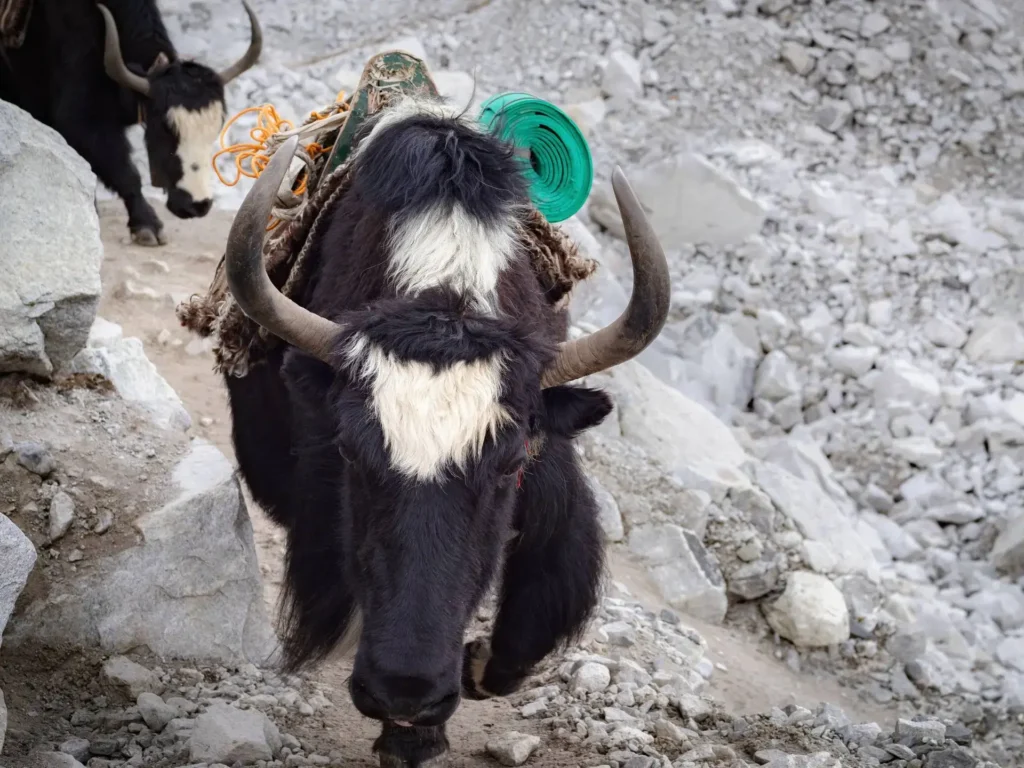
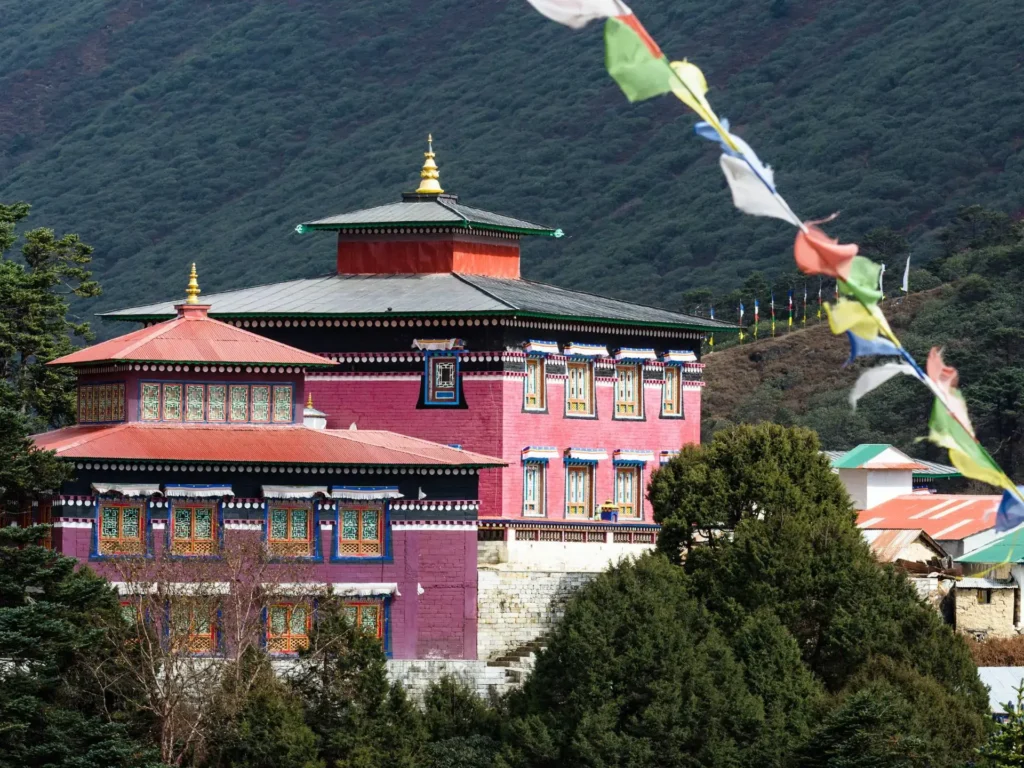
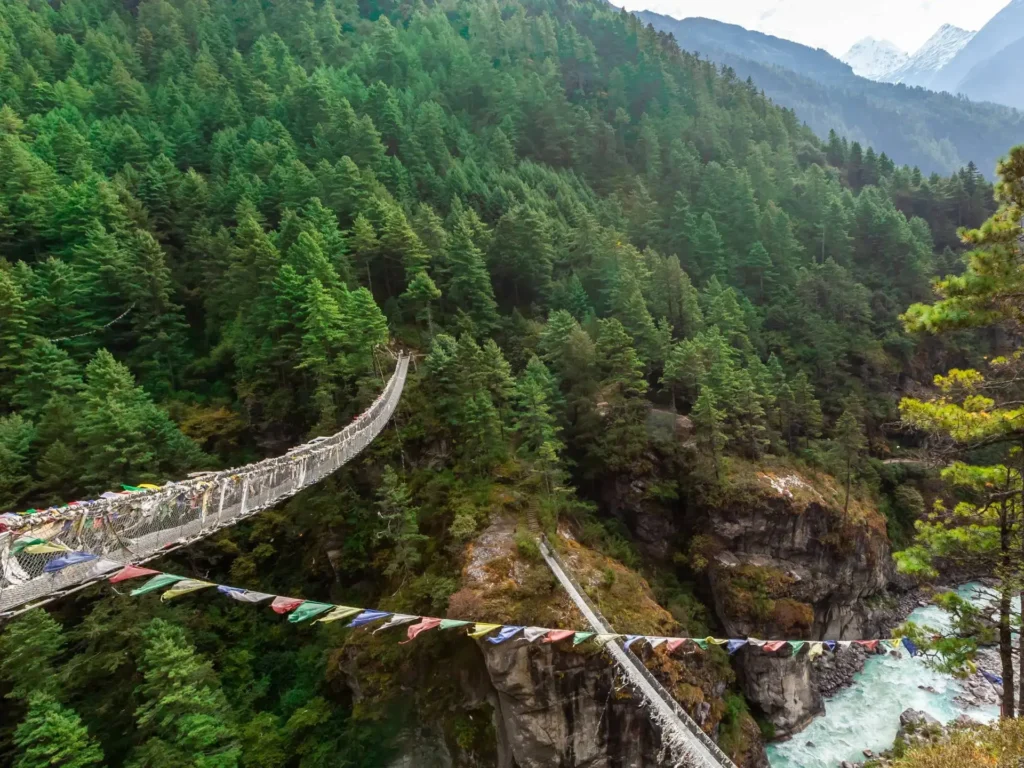




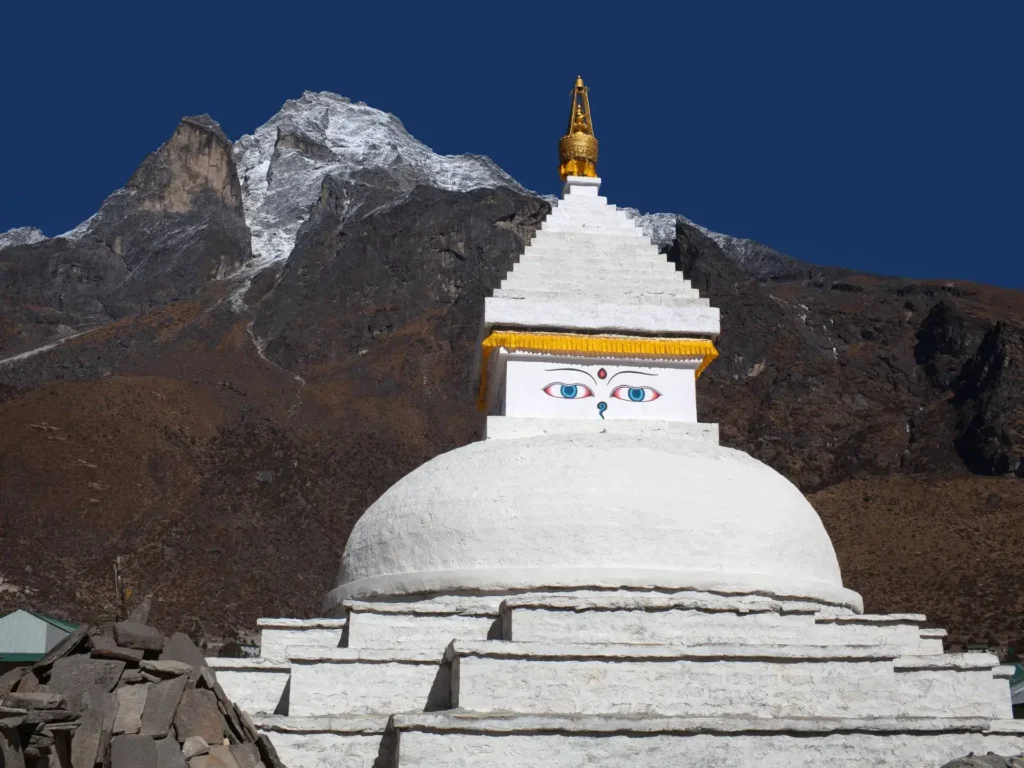
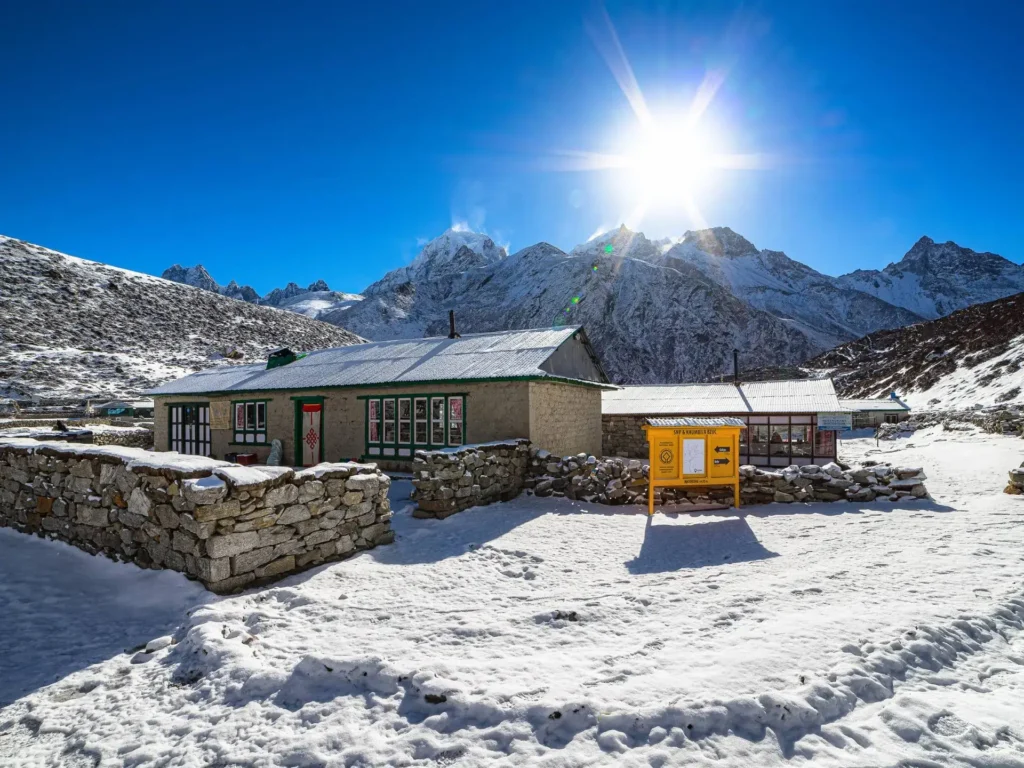
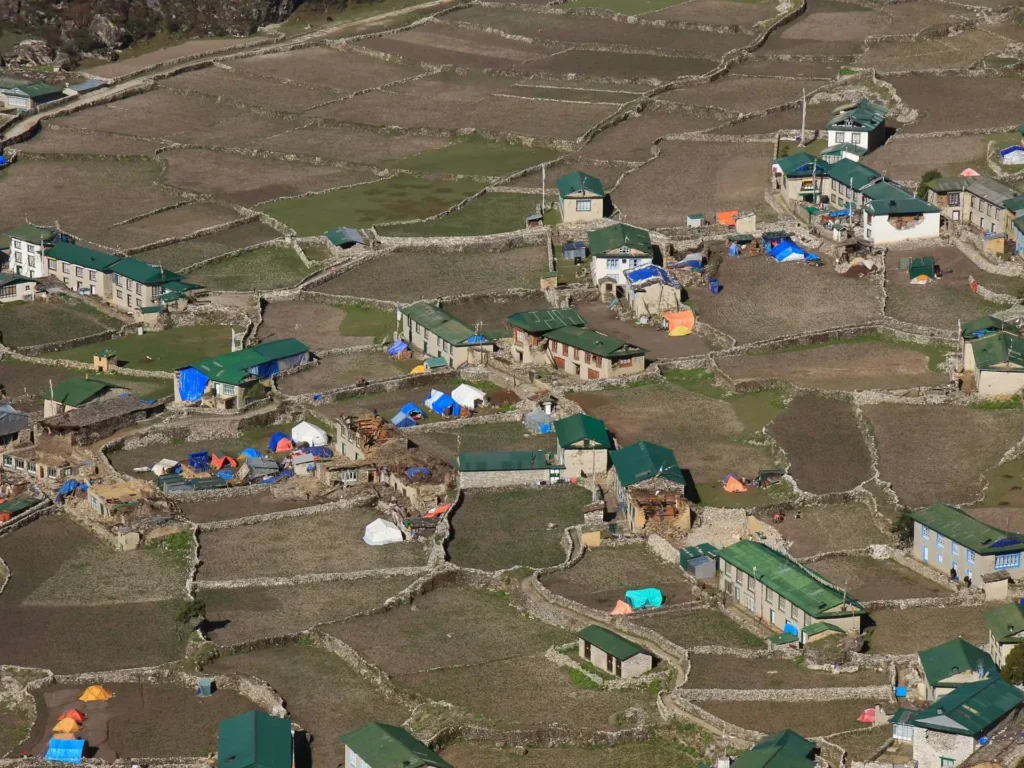
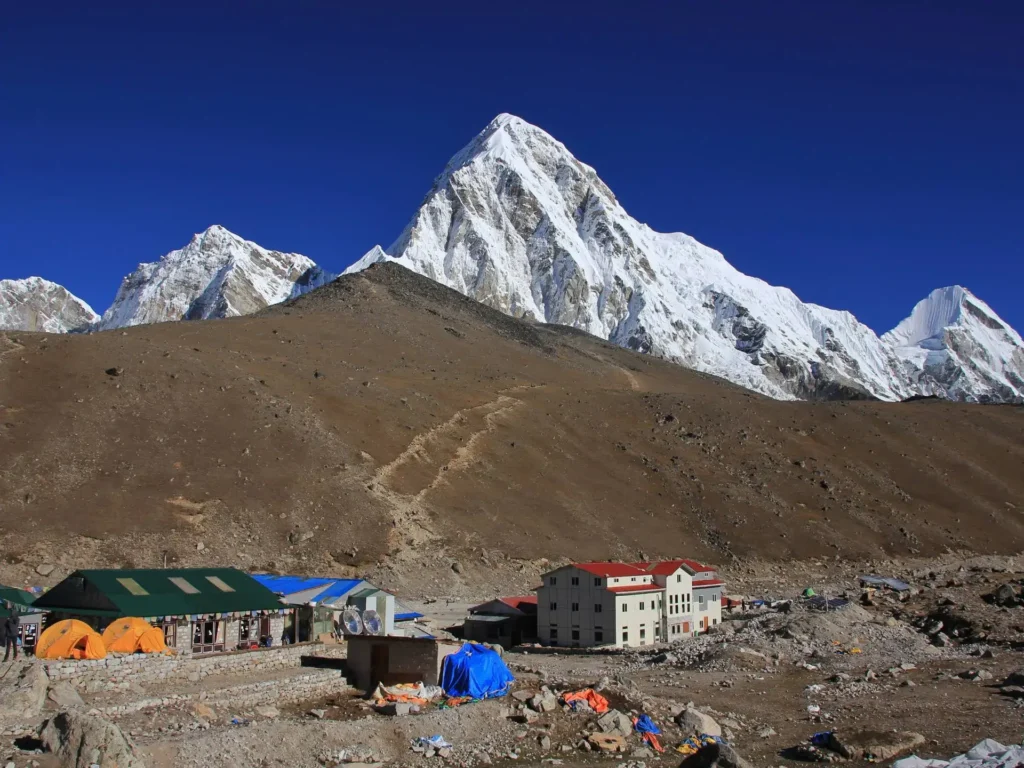
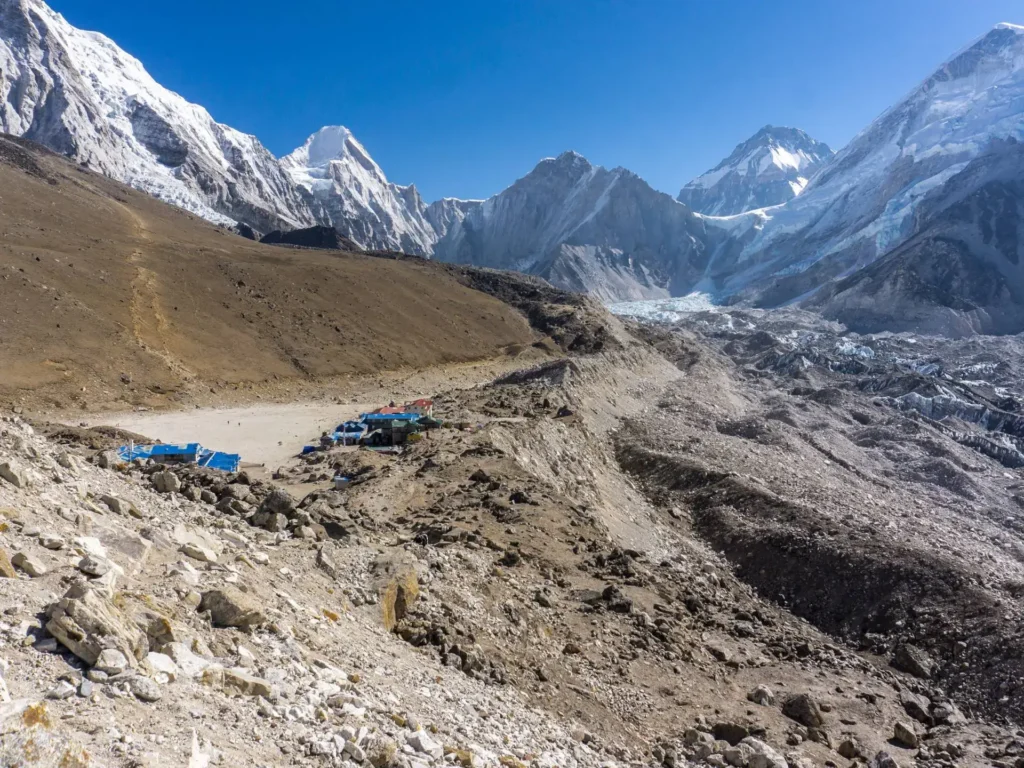



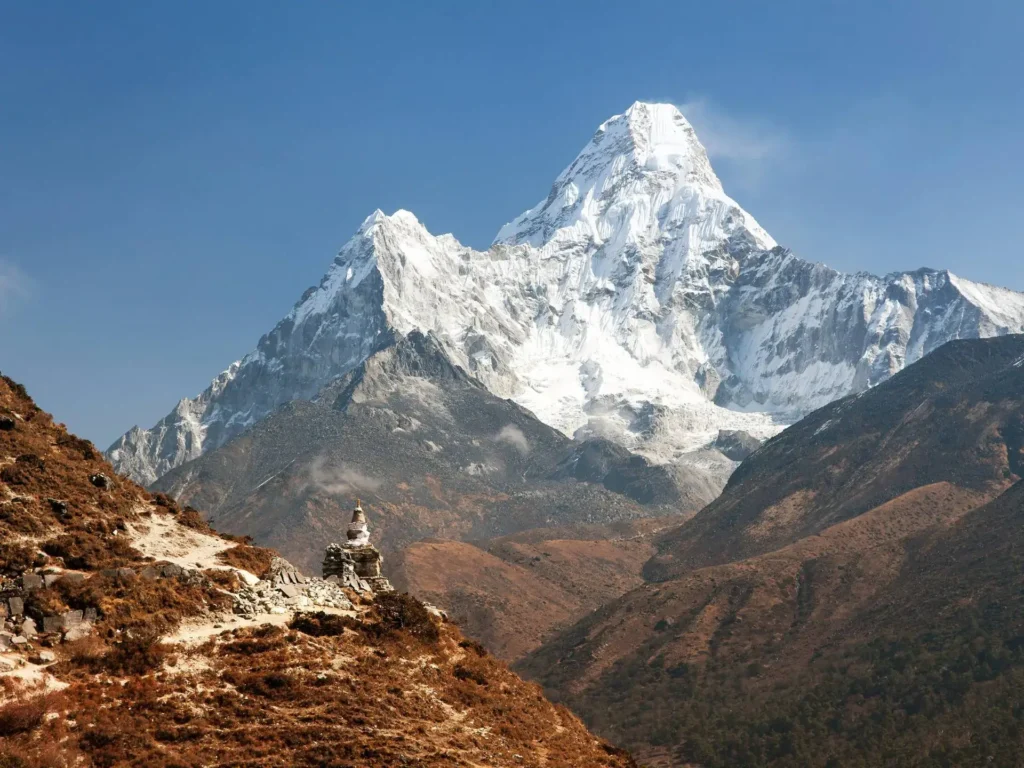
Maps
FAQs
The total budget of your EBC trek should be around INR 1 lakh to INR 1.20 Lakh.
Around 130 km which is walked over 12 days.
In India, you can look into ASC360 which provides High altitude cover and Heli rescue.
Yeah, mobile network and internet are available during the trek. For charging your camera, smartphone and power bank, tea houses charge extra amount. You can also consider bringing Solar Charger with you.
To book a trek on our website, check out the dates first, then click on book now, fill out your details, and complete the payment.
52,999
/ Per Person
+5% GST
Book NowAvailable Dates
September 7, 14, 21 and 28
October 1, 5, 9, 12, 19, 26 and 30
November 2, 16 and 30
December 7



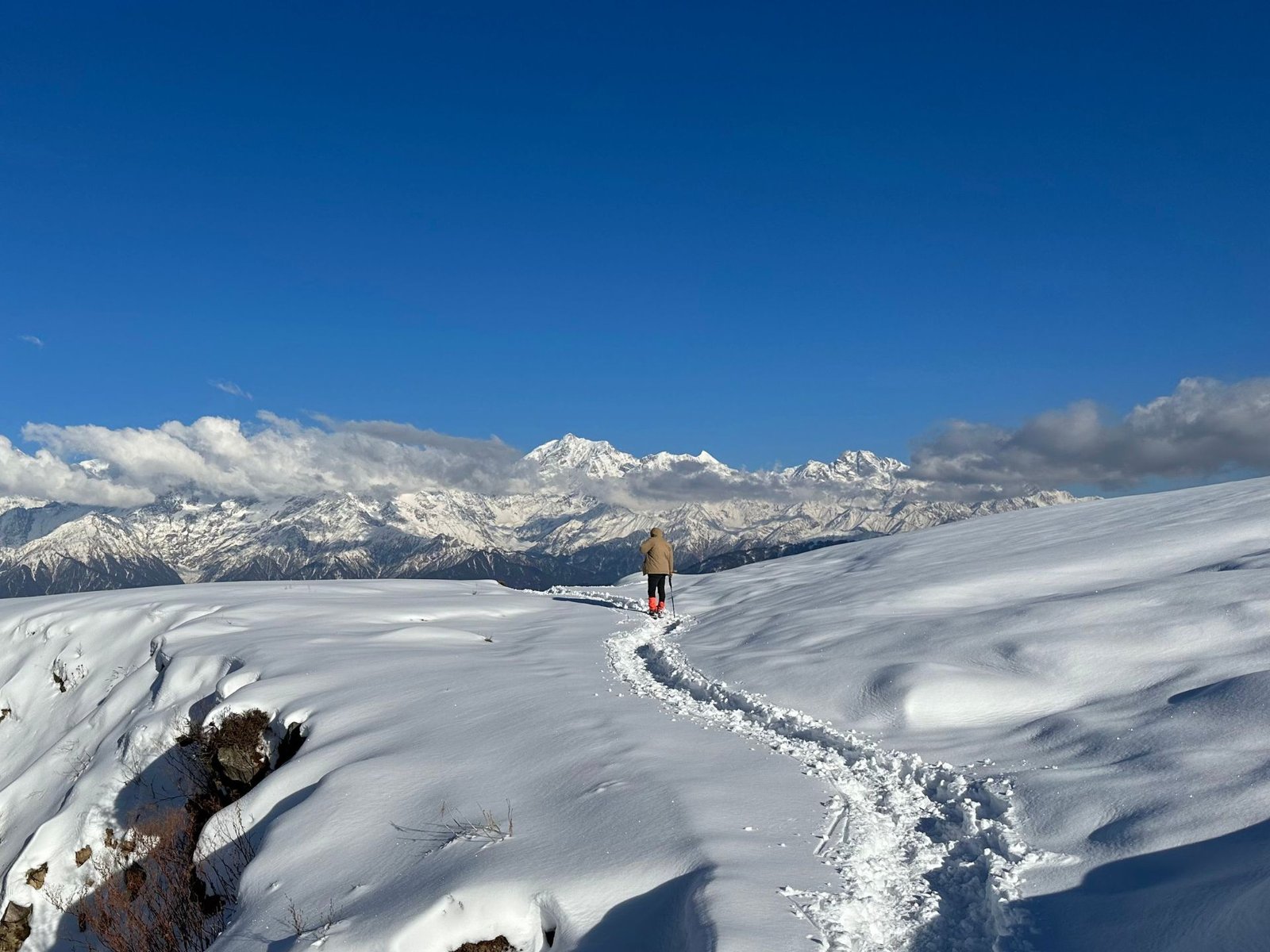

Leave a Comment